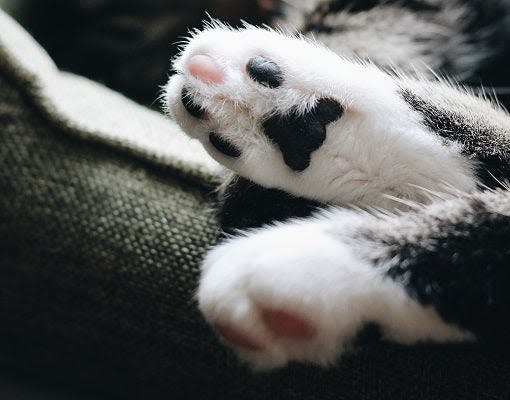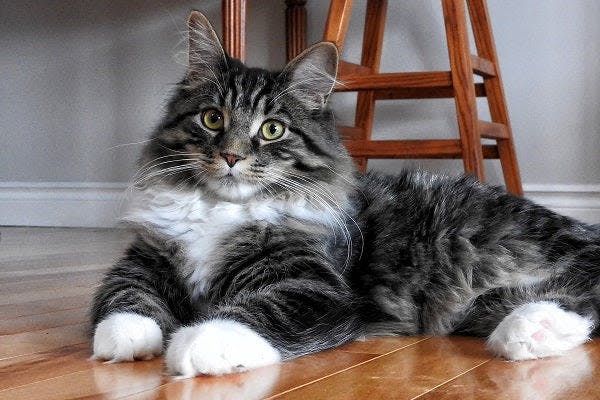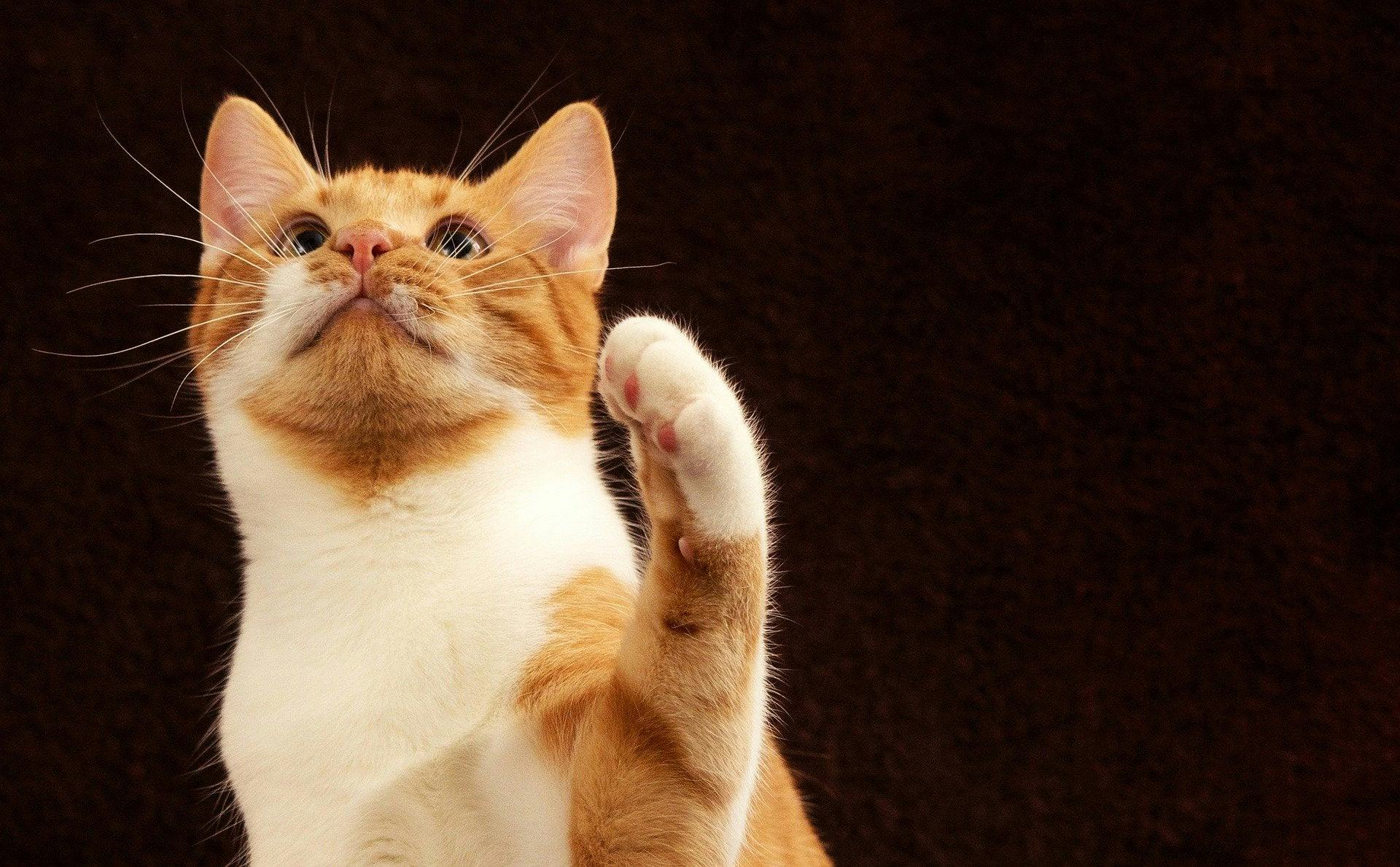All fur parents are utterly in love with the flawless white tips of their pets' paws. This charming feature is often lovingly referred to as "gloves", "socks", "boots" or "mittens". Do you know how this genetic phenomenon actually occurs though? The time has finally come to debunk some of the very confusing genetic quirks behind white gloves in cats!
Identifying the genes behind kitty gloves
White kitty socks, stretching from a cat’s ankles to the tips of its toes, are of course genetically determined. It is difficult to pin-point just one gene that's behind this feature; rather, there are many genetic factors which shape your cat's color and pattern, which is why it remains very challenging to fully understand feline coat genetics. The genes associated with white fur and white patches have been particularly misunderstood for a long time.
It was previously thought that two different genes are involved in the formation of completely white fur and white patches. These genes were named the white masking gene and the white spotting gene. Now we know that these two genetic variants are not separate genes at all, but they are actually alleles found on the KIT gene. Certain variants of this gene have been associated with white patches in cats, including white paws.

White gloves in cats
About the KIT gene
The KIT gene is the gene responsible for white coat combinations in cats. There are several variants/alleles of the KIT gene:
a) Wild type (w) allele. This is a recessive variant of the gene, meaning that it will only be expressed in homozygotes, or cats who inherit the allele from both parents. Homozygotes for the wild-type allele will not have any white in their coat, and their coat color will be shaped by other color-associated genes.
b) Dominant white (WD). The dominant white allele is expressed in both homozygotes and heterozygotes, and it causes complete white coloration regardless of any other color genes. It covers any influence from other color genes, which might be later revealed in the offspring of heterozygotes. Dominant white gene disrupts replication and migration of melanocytes, or cells that create dark pigment in skin, and it has also been linked to blue eyes and increased risk of deafness.
c) White spotting (piebald) (WS) variant. The white spotting allele is a codominant allele of the KIT gene which leads to the formation of white spots or patches on the coat, and it can highly vary in expression. Dominant homozygotes (WS/WS) typically express extensive white patching in comparison to heterozygotes (WS/ws). Recessive homozygotes (ws/ws) don't express any white spots in their coat.
This gene produces white, unpigmented patches by delaying the migration of melanocytes to the skin surface. White-spotted cats often have white paws, too, which is why this gene is one of the major factors associated with this charming feature. The non-white spots in the fur will depend on the expression of other color- and pattern-related genes.

White gloves in cats
d) Birman white gloving allele (wg). This KIT allele is recessive, and it causes Birman-specific white gloves/socks. The homozygotes for this gene will have white gloved feet, while heterozygotes will also have white gloves but may also have other white patches in the coat too (due to the effect of other gene variants). This mutation was first identified in Birman cats, in which it is fixed (there are no non-carrier purebreds), hence the name of the gene variant. It can be found in Ragdolls, Egyptian Maus, Exotic Shorthairs, Maine Coons, Manx', Siamese, Sphynx, Turkish Van and Seychellois (source).
Off with the white, on with the color-point!
In contrast to the lovely snowshoe kitties, color-pointed beauties have light fur which gradually becomes darker as it reaches the face, ears, feet and tail. The pointed pattern is a form of partial albinism and it's caused by a mutation in tyrosinase (an enzyme involved in the production of melanin).
The mutated version of this enzyme is heat-sensitive, and it fails to work at normal body temperatures. It activates only in cooler areas of the skin (lower than 33 °C). Therefore, the coolest parts of a cat’s body will be pigmented darker than the rest, such as its extremities and face. These pigmented points can be very dark in color, almost black, or cool grey, light brown or lilac.
Other genes associated with white fur
Other than the KIT gene, white fur can also be associated with the tyrosinase gene mentioned above. The gene coding for the tyrosinase enzyme is the C gene. The dominant allele codes for a fully functioning protein, and all the carriers will show full coat pigmentation.
There are two recessive alleles of this gene that cause two forms of albinism: complete and temperature sensitive. Temperature sensitive albinism (explained above) is expressed in Burmese, Siamese and Tonkinese breeds, for example. The allele causing complete albinism results in a cat’s fully white appearance. However, true albinism is very rare.

White gloves in cats
White gloved cats are truly captivating and loveable. Here at Basepaws, we are utterly in love with cats of all colors, shapes and sizes, but who doesn't have a soft spot for the little white glove? Does your furry companion wear gloves? Share with us on Facebook, Instagram or Twitter!
Related topics:
